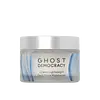What's inside
What's inside
 Key Ingredients
Key Ingredients

 Benefits
Benefits

 Concerns
Concerns

 Ingredients Side-by-side
Ingredients Side-by-side

Water
Skin ConditioningIsocetyl Stearate
EmollientSqualane
EmollientButyrospermum Parkii Butter
Skin ConditioningDimethicone
EmollientGlycerin
HumectantAluminum Starch Octenylsuccinate
AbsorbentPentylene Glycol
Skin ConditioningPEG-100 Stearate
Glyceryl Stearate
EmollientCetyl Alcohol
EmollientSodium Hydroxide
BufferingAcetyl Dipeptide-1 Cetyl Ester
Skin ConditioningToluene Sulfonic Acid
Dimethiconol
EmollientAcrylates/C10-30 Alkyl Acrylate Crosspolymer
Emulsion StabilisingCitric Acid
BufferingWater, Isocetyl Stearate, Squalane, Butyrospermum Parkii Butter, Dimethicone, Glycerin, Aluminum Starch Octenylsuccinate, Pentylene Glycol, PEG-100 Stearate, Glyceryl Stearate, Cetyl Alcohol, Sodium Hydroxide, Acetyl Dipeptide-1 Cetyl Ester, Toluene Sulfonic Acid, Dimethiconol, Acrylates/C10-30 Alkyl Acrylate Crosspolymer, Citric Acid
Water
Skin ConditioningLactobacillus Ferment
Skin ConditioningDicaprylyl Ether
EmollientGlycerin
HumectantC9-12 Alkane
SolventLactococcus Ferment Lysate
Skin ConditioningNiacinamide
SmoothingSaccharide Isomerate
HumectantPanthenol
Skin ConditioningTocopheryl Acetate
AntioxidantAvena Sativa Seed Extract
Skin ConditioningGinkgo Biloba Leaf Extract
Skin ConditioningLavandula Angustifolia Flower/Leaf/Stem Extract
MaskingCamellia Sinensis Leaf Extract
AntimicrobialAloe Barbadensis Leaf Juice Powder
Skin ConditioningCitrus Limon Peel Extract
EmollientPyrus Malus Fruit Extract
Skin ConditioningRubus Idaeus Fruit Extract
AstringentSalvia Officinalis Leaf Extract
CleansingRosmarinus Officinalis Leaf Extract
AntimicrobialCucumis Melo Fruit Extract
Skin ConditioningVaccinium Macrocarpon Fruit Extract
AstringentCetearyl Alcohol
EmollientCetearyl Glucoside
EmulsifyingCetearyl Olivate
Sorbitan Olivate
EmulsifyingCocoglycerides
EmollientHydroxyethyl Acrylate/Sodium Acryloyldimethyl Taurate Copolymer
Emulsion StabilisingDecyl Glucoside
CleansingLauryl Glucoside
CleansingTriethyl Citrate
MaskingCitric Acid
BufferingEthylhexylglycerin
Skin ConditioningSodium Citrate
BufferingPhenoxyethanol
PreservativeXanthan Gum
EmulsifyingWater, Lactobacillus Ferment, Dicaprylyl Ether, Glycerin, C9-12 Alkane, Lactococcus Ferment Lysate, Niacinamide, Saccharide Isomerate, Panthenol, Tocopheryl Acetate, Avena Sativa Seed Extract, Ginkgo Biloba Leaf Extract, Lavandula Angustifolia Flower/Leaf/Stem Extract, Camellia Sinensis Leaf Extract, Aloe Barbadensis Leaf Juice Powder, Citrus Limon Peel Extract, Pyrus Malus Fruit Extract, Rubus Idaeus Fruit Extract, Salvia Officinalis Leaf Extract, Rosmarinus Officinalis Leaf Extract, Cucumis Melo Fruit Extract, Vaccinium Macrocarpon Fruit Extract, Cetearyl Alcohol, Cetearyl Glucoside, Cetearyl Olivate, Sorbitan Olivate, Cocoglycerides, Hydroxyethyl Acrylate/Sodium Acryloyldimethyl Taurate Copolymer, Decyl Glucoside, Lauryl Glucoside, Triethyl Citrate, Citric Acid, Ethylhexylglycerin, Sodium Citrate, Phenoxyethanol, Xanthan Gum
Ingredients Explained
These ingredients are found in both products.
Ingredients higher up in an ingredient list are typically present in a larger amount.
Citric Acid is an alpha hydroxy acid (AHA) naturally found in citrus fruits like oranges, lemons, and limes.
Like other AHAs, citric acid can exfoliate skin by breaking down the bonds that hold dead skin cells together. This helps reveal smoother and brighter skin underneath.
However, this exfoliating effect only happens at high concentrations (20%) which can be hard to find in cosmetic products.
Due to this, citric acid is usually included in small amounts as a pH adjuster. This helps keep products slightly more acidic and compatible with skin's natural pH.
In skincare formulas, citric acid can:
While it can provide some skin benefits, research shows lactic acid and glycolic acid are generally more effective and less irritating exfoliants.
Most citric acid used in skincare today is made by fermenting sugars (usually from molasses). This synthetic version is identical to the natural citrus form but easier to stabilize and use in formulations.
Read more about some other popular AHA's here:
Learn more about Citric AcidGlycerin is already naturally found in your skin. It helps moisturize and protect your skin.
A study from 2016 found glycerin to be more effective as a humectant than AHAs and hyaluronic acid.
As a humectant, it helps the skin stay hydrated by pulling moisture to your skin. The low molecular weight of glycerin allows it to pull moisture into the deeper layers of your skin.
Hydrated skin improves your skin barrier; Your skin barrier helps protect against irritants and bacteria.
Glycerin has also been found to have antimicrobial and antiviral properties. Due to these properties, glycerin is often used in wound and burn treatments.
In cosmetics, glycerin is usually derived from plants such as soybean or palm. However, it can also be sourced from animals, such as tallow or animal fat.
This ingredient is organic, colorless, odorless, and non-toxic.
Glycerin is the name for this ingredient in American English. British English uses Glycerol/Glycerine.
Learn more about GlycerinWater. It's the most common cosmetic ingredient of all. You'll usually see it at the top of ingredient lists, meaning that it makes up the largest part of the product.
So why is it so popular? Water most often acts as a solvent - this means that it helps dissolve other ingredients into the formulation.
You'll also recognize water as that liquid we all need to stay alive. If you see this, drink a glass of water. Stay hydrated!
Learn more about Water